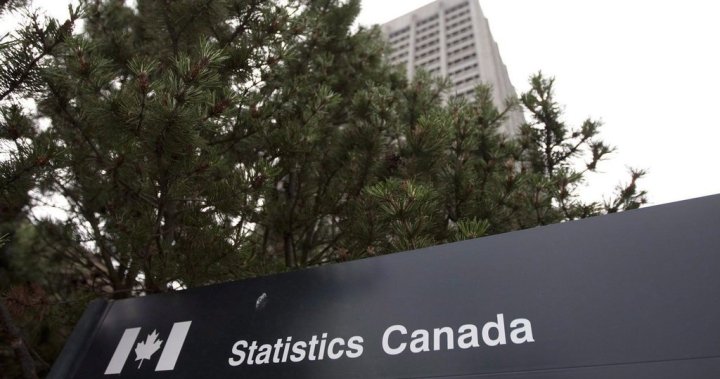Canada
Canada’s inflation in January likely saw little change. Here’s why

Canada’s Inflation Story: A Calm Before the Clarity?
As the world watches Canada’s economic landscape, the country’s inflation story is set to take center stage with the release of January’s consumer price index (CPI) data. Economists are bracing for little to no change in the inflation numbers, but the underlying trends are expected to be muddied by a unique factor: the federal government’s Goods and Services Tax (GST) break. This temporary tax holiday, which began on December 14, has already made its mark on December’s inflation figures, slowing the annual inflation rate to 1.8 percent. While this pause on certain taxes has brought some holiday cheer to consumers—particularly for restaurant food purchases and alcohol bought from stores—its impact on the broader inflation picture is complex. Without this tax reprieve, Statistics Canada estimates that inflation would have climbed to 2.2 percent, signaling that the underlying price pressures are stronger than they appear.
The GST Holiday: A Double-Edged Sword for Inflation Readings
The GST break has been a double-edged sword for economists and policymakers alike. On one hand, it has provided much-needed relief to Canadian consumers, helping to slow inflation just in time for the holiday season. On the other hand, it has introduced a layer of distortion in the inflation data, making it challenging to discern the true state of underlying price trends. For instance, in December, while inflation slowed to 1.8 percent year-over-year, the exclusion of the tax break would have revealed a higher figure of 2.2 percent. This disparity underscores the temporary nature of the relief and the potential for inflation to rebound once the tax holiday ends in March. As RBC assistant chief economist Nathan Janzen noted, the distortions caused by the GST break will continue to cloud inflation readings until March, when the data will reflect a clearer picture of the economy.
Shelter Costs and Grocery Prices: The Mixed Signals
While the GST break has dominated the headlines, other components of the CPI tell a more nuanced story. Shelter costs remain a significant driver of inflation, with year-over-year growth slowing slightly to 4.5 percent in December but still elevated compared to historical averages. Rent prices, in particular, continue to rise sharply, growing by 7.1 percent year-over-year. These numbers highlight the persistent challenges in Canada’s housing market, where supply constraints and high demand have kept upward pressure on rents. On the other hand, grocery prices saw a slowdown in growth, rising by 1.9 percent year-over-year, down from the previous month’s pace. Gas prices also saw a notable increase, climbing to 3.5 percent year-over-year. These mixed signals suggest that while some areas of the economy are showing signs of cooling, others remain hotspots of inflationary pressure.
The Bank of Canada’s Dilemma: Weighing the Evidence
As the Bank of Canada prepares for its next interest rate decision on March 12, the January inflation data will be closely scrutinized for clues about the economy’s trajectory. The central bank has already taken a cautious approach, cutting its benchmark interest rate to 3 percent on January 29. This move was driven by encouraging signs that the economy is gaining momentum, coupled with inflation holding steady near the Bank’s 2 percent target. However, economists warn that the Bank’s next steps will depend heavily on how underlying inflation trends evolve. BMO chief economist Doug Porter emphasized that the Bank will focus on its preferred “core” CPI measures, which exclude the impact of indirect taxes like the GST break, to gauge the true state of inflation.
The Wild Card: A Potential U.S.-Canada Trade War
One wildcard that could tip the scales in the Bank of Canada’s decision-making process is the growing threat of a trade war with the United States. A trade war could have far-reaching implications for Canada’s economy, disrupting supply chains, raising prices, and creating uncertainty for businesses and consumers alike. Porter noted that the Bank will closely monitor how this potential conflict unfolds, as it could significantly influence the trajectory of inflation and economic growth. If tensions escalate, the Bank may be forced to reconsider its rate-cutting path, as the economic landscape could shift dramatically. Conversely, if a trade war is averted, the Bank is likely to continue its gradual approach to lowering rates, inching closer to what Porter describes as a “neutral” rate of around 2.5 percent.
Looking Ahead: Clarity on the Horizon?
As the GST holiday nears its end in March, Canadians can expect a clearer picture of the economy’s health. Until then, the distortions caused by the tax break will continue to muddy the waters, making it challenging to discern the true state of inflation. However, what is clear is that Canada’s economy is in a far better place than it was just a year ago, when inflation was running hot. The recent slowdown in inflation, coupled with the Bank of Canada’s cautious approach, suggests that the country’s economic fundamentals are improving. As the Bank waits for more clarity on the inflation front, Canadians can take heart in the knowledge that while the road ahead is uncertain, the economic storm of recent years appears to be subsiding.











